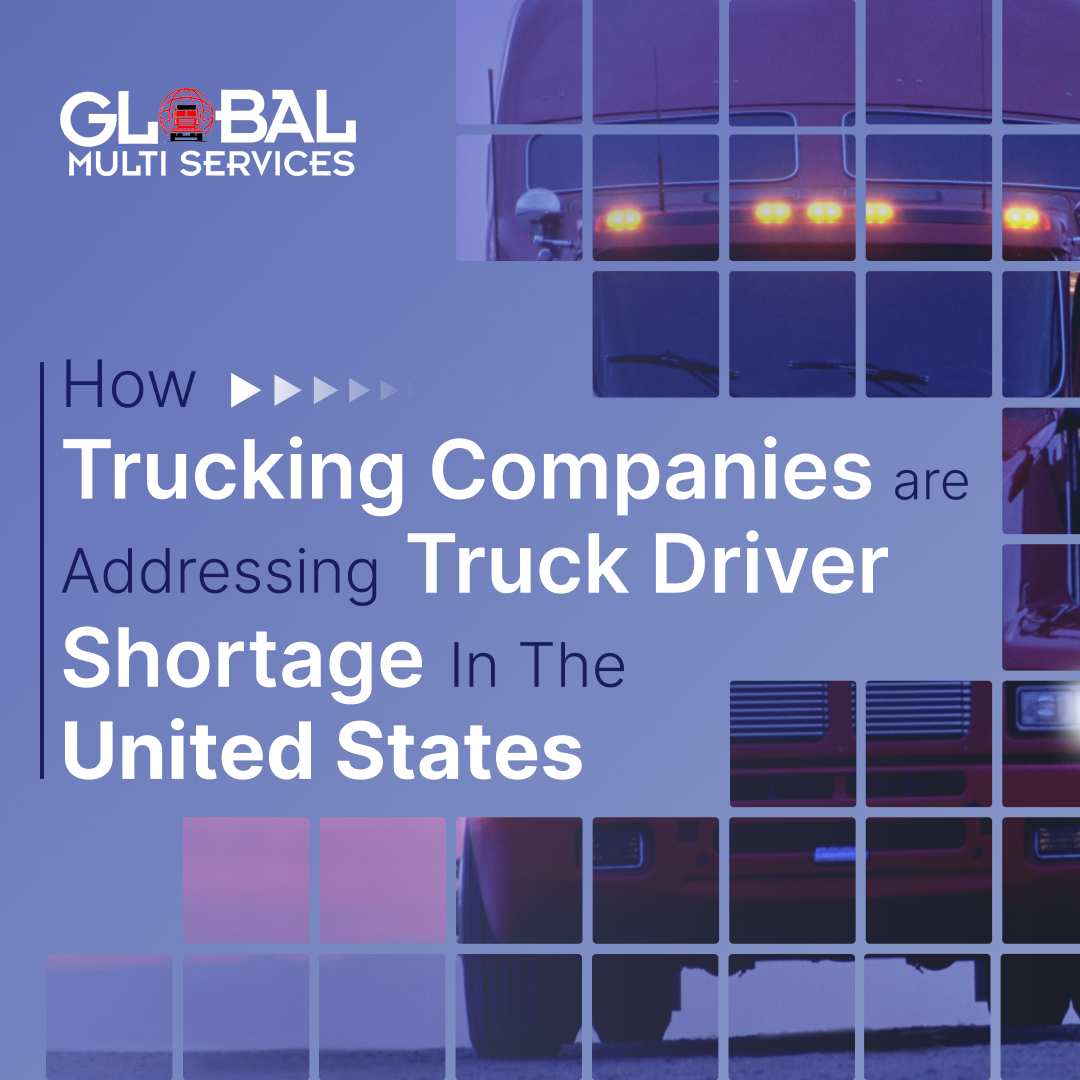HOW TRUCKING COMPANIES ARE ADDRESSING TRUCK DRIVER SHORTAGE IN THE UNITED STATES
June 9, 2022 0truck businessTrucking
The trucking industry is experiencing a severe shortage, and it is growing worse over time. More than 50% of trucking companies are also having trouble hiring truckers. These imply they have trucks sit for days, increasing costs and impacting the company revenue. Truck drivers move about 70% of raw materials and products used throughout the United States. With driver shortage rising, prices are increasing, and fewer goods are delivered. These could skyrocket inflation if not addressed.
Age restrictions and schooling issues top the list for driver shortages across the country. The federal law prevents drivers below 21years from hauling freight across state lines, even though 49 states allow younger drivers to get a commercial driver’s license. Also, according to reports, the average new truck driving student is well into their 30s. These show they are often on their second, third, or even fourth career path.
Another obstacle is the requirement for truck drivers to pass pre-employment, drug screenings, and the COVID-19 pandemic. Drug screening has deemed more than 70,000 drivers ineligible, but just 12,000 have completed the process to return to duty. The inflation and job loss caused by the pandemic have also made many drivers consider other careers.
TRUCK DRIVER SHORTAGE SOLUTION
Trucking companies need to stay efficient and deliver goods on time despite the truck driver shortage. But these can be challenging without a resilient logistics operation. A lack of drivers can also affect the company’s success, especially with international shipments. Here are a few practices trucking companies can implement to focus on controllable issues and help reduce shortages and inflation.
ATTRACT NEW TRUCK DRIVERS
Providing a good working environment attracts new drivers. It also makes it easier to foster partnerships and build relationships within the company. Paying for training, schooling, and giving drivers tools for safe and efficient driving help attract new drivers. It also demonstrates foresight and concern for them.
INCREASE PAY AND BONUSES
Trucking companies and recruiters should increase pay and sign-on bonuses to combat driver shortages. Paying drivers a little more or being more flexible with time on and time off eliminate potential operational interruptions. Issues like bad road conditions and traffic in metro areas reduce drivers’ income when paid per mile. Therefore, it is advisable to pay fuel economy, safety bonuses, and labor fees for drivers who unload their freight. Other ideas include offering a comprehensive benefits package and tuition reimbursement. Additionally, implementing flexible shipping rates that pay drivers by the hour.
EMPLOYING UNDERREPRESENTED DEMOGRAPHICS
Trucking companies should widen their pool of potential applicants by employing under-represented demographics. These include military veterans, women, and younger drivers. According to reports, less than 7% of United States truck drivers are female. Therefore, creating more awareness and promoting women drivers will increase recruitment.
DRIVING SCHOOL AND LOWER DRIVING AGE
The minimum federal age for driving trucks across state lines is 21. These make it challenging to hire young drivers and eliminate eligible workers. Lowering the minimum age opens more positions for interested drivers between 18 and 20years.
Trucking companies can also attract new drivers by paying for their training and the cost of getting their CDL. Offering a program that trains them to meet the criteria for interstate transport and building more truck driving schools with campuses across the United States attracts more truck drivers.
REDUCE DRIVER DETENTION TIME
Truck driver shortage affects freight movement, and drivers are needed to handle current and future capacity. And one of the best ways to keep up with demand is by reducing driver’s retention time. Truck drivers are often delayed and forced to wait for freight when shipments are not ready. These increase drivers’ frustration and reduce their pay. Innovation and driver management help schedule the pickup/unload times and reduce detention time. These improve operations and save time and money.
IMPLEMENTING SHORTER ROUTES
Fleets can minimize the downside of driving for many hours and avoiding traffic by implementing shorter routes. Decreasing the time drivers spend on the road makes their lifestyle more appealing to new drivers. For example, A driver can take a trailer to a drop-off point, and another driver picks it up and takes it to the final destination or another drop-off. Adding more drop-off points for shorter routes makes drivers get home every day.
INCREASE TRUCK PARKING CAPACITY
According to the US Federal Highway Administration reports, 80% of truck drivers claim finding where to park is problematic. The lack of adequate parking infrastructure makes truckers park in prohibited areas and pay fines. Safe parking spots are unquestionably necessary for protecting truck drivers and preventing threats to their security and cargo.
The government should provide databases for booking safe and secure parking spaces convenient for truckers, transportation companies, and facilities. Every truck should have a delivery route and a designated place to park. These create safer working conditions for truck drivers.
WORKLIFE BALANCE
New drivers, especially Millennials and Gen Z, are hesitant to become truck drivers because it is challenging to maintain a healthy work/life balance. Truck drivers are often away from family and friends for weeks or months. These need to change, and the best option would be to develop fleet technologies.
PROVIDING AUTONOMOUS TRUCK
The technology isn’t limited to passenger cars anymore. Self-driving trucks are starting to take over and could help relieve current drivers and make it easier for companies to meet their delivery deadlines without pushing their drivers too hard. The trucking industry is exploring the most cutting-edge technology for improving trucking. Tesla announced its fully autonomous self-driving freight truck in 2017. Elon Musk also announced in 2021 that these trucks would be the first Tesla vehicles to have Level 4 automation, meaning they would be able to pilot themselves without the need for human intervention.


